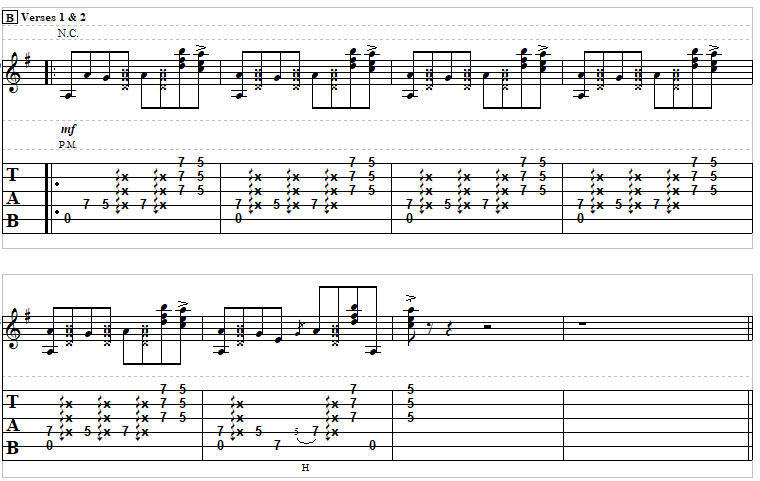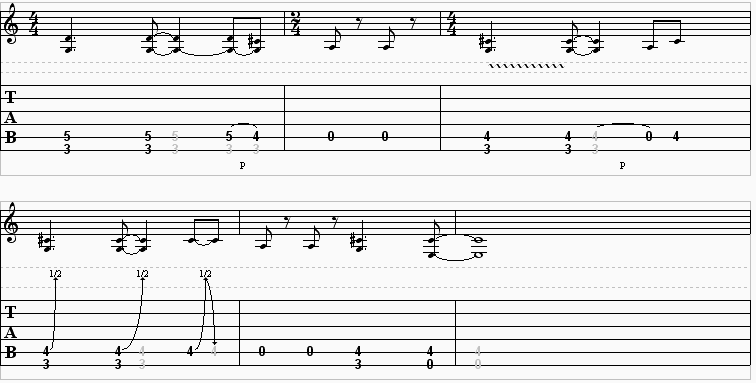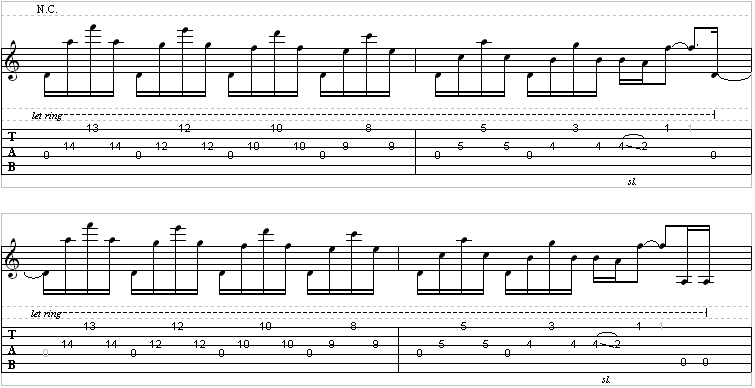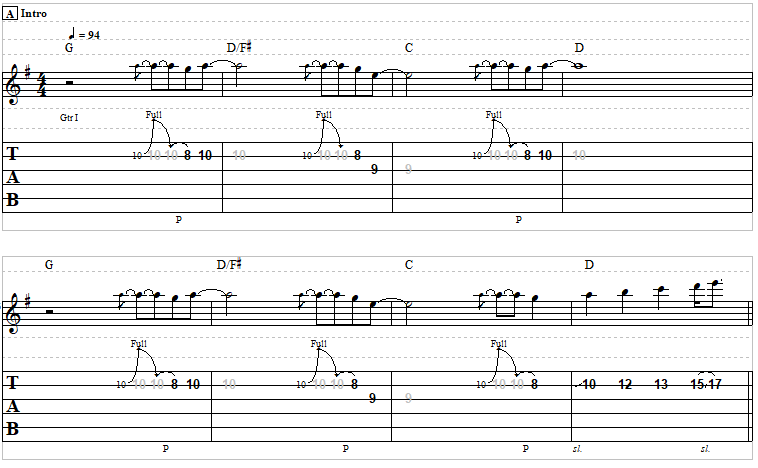
La Grange- ZZ Top
Here’s how to play the main riff to “La Grange” by ZZ Top.

Smoke On The Water- Deep Purple- Main Riff
So, what’s the very first guitar riff that everyone learns? You got it: Smoke On The Water.

Complete Transcription:
Cold Shot 2

Bang Your Head- Quiet Riot

Blue Wind- Jeff Beck
This riff is in 4/4 time except for the 2nd measure in which we switch to 2/4 time (only 2 beats).
Notice that the 4th measure mirrors the 1st measure, but with the addition of bends. This is a typical Jeff Beckism. It may be tricky to get it to sound right because it relies on precise bending.


Wanted (Dead Or Alive)- Bon Jovi
Difficulty: Easy – Intermediate
The song is meant to be played on a 12-string, but you can still play it on your standard acoustic. Also note that there are a few times that you would technically need an electric for the lead guitar, but again you can play this song using only your acoustic. You just may have to alter a few tiny techniques to make it work. (Such as the tremolo dive, a FEW harmonics, etc.)
Intro Theme 1

Download The Guitar Tab For Wanted Dead Or Alive
The Joker 1

Wonderful Tonight – Solo – Lead Guitar
This is a really easy lead. If you have little or no prior experience playing lead guitar, this would be a great start!

Complete Transcription To “Wonderful Tonight ” (PDF)
Complete Transcription To “Wonderful Tonight ” (Power Tab)
Soul Man 3

